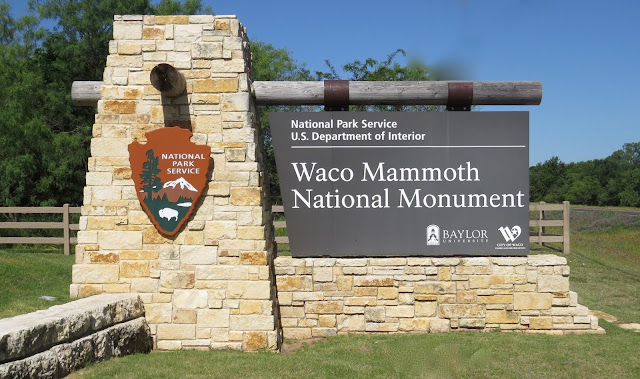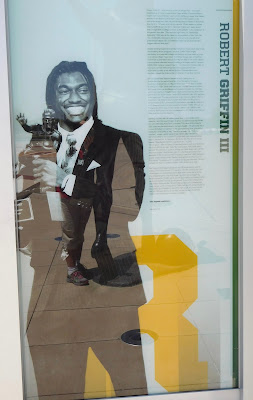“The preservers of history are as heroic as its makers. Inscription on Pat Neff Hall, campus of Baylor University
Carol writes: Our usual routine is to stay a minimum of 1-2 weeks at each of our stops. However, we have a lot of miles to cover in the next month as we travel across Texas and up through New Mexico to Colorado Springs where we have yearly appointments scheduled with our medical providers. Out of necessity, we have to pick up the pace, as there is no fighting geography! So… all of our stops over the past 2 weeks had to be condensed into brief stays of 3-5 days each.
KINDER, LOUISIANA
After leaving the sparkling Gulf coast of Mississippi, our first stop in our accelerated pace was for 3 days at the Coushatta Casino Resort on the outskirts of Kinder, Louisiana, which billed itself as “The Crossroads to Everywhere.”
Our opinion was that the Native American Coushatta Tribe had a first-rate campground and a very popular top-notch casino with loads of “friendly slots.” The Coushatta tribal history webpage claimed that their resort was the second largest private employer in the state of Louisiana; for that, we definitely awarded them kudos.
SAM RAYBURN RESERVOIR
Our next stop was the first in the Lone Star State of Texas, where we stayed for 4 days at an Army Corps of Engineers campground right on the shore of the Sam Rayburn Reservoir, the largest man-made lake within the boundaries of Texas. This section of southeast Texas was a heavily forested area called the “Big Thicket.” Our campsite was incredibly scenic, one of our most beautiful and peaceful to date…
surrounded by a large grove of fully mature pine trees smack on the shore of the reservoir.
This campsite was our first experience with a 30-amp electrical hookup instead of our customary 50-amp. After refreshing our knowledge of the amperage used by every major appliance and system in our coach, we did quite well and didn’t so much as trip a circuit breaker.
LAKE WACO
Our next stop was for 5 days at another Army Corps of Engineers campground, this one on the shore of Lake Waco within the Waco, Texas, city limits. By this time, the calendar had flipped the page to the month of May, and this part of central Texas had already started to heat up. We were glad to be back to a 50-amp hookup where we could use the full capacity of the air conditioners.
The city of Waco proved to be a pleasant surprise… with much more appealing modern neighborhoods than we had expected in this rural part of Texas. Waco is the home of one of our newest national monuments—Waco Mammoth National Monument—
which was designated by President Obama in 2015. This site has the nation’s first and only skeletal discovery of a nursery herd (includes females and their offspring) of Pleistocene Columbian mammoths.
We viewed the discovery site on a guided tour to the climate-controlled dig shelter where we could see the partially exposed skeleton of a large male mammoth,
plus a smaller female on her side, with ribs and teeth exposed.
In partnership with Baylor University, this site is devoted to the study and preservation of this remarkable discovery of Columbian mammoth bones.
Speaking of Baylor University, we knew little about it and decided to check out the campus…
Baylor University has the distinction of being the oldest continuously operating university in Texas and the largest Baptist university in the world. And… as the university proudly boasts in a bronze statue display in front of their football stadium on the Brazos River, Baylor is the home of “RG3”, otherwise known as Robert Griffin III, winner of the 2011 Heisman Trophy.

As we strolled across the bridge over the Brazos River from our starting point at McLane Stadium,
we soon got the impression that no sporting venue or academic building at Baylor would be ordinary. Baylor Law School certainly had the wow factor, perched along the shore of the Brazos River across the footbridge from the stadium.
In the historic section of the campus, the gold-plated dome of Pat Neff Hall stood out like a jewel. We were told that the gold plating had been added to the dome thanks to financing from a wealthy Baylor alum who offered a blank check for the project.
One superlative structure after another on the Baylor campus captured our attention, such as the Baylor Sciences Building,
and the inside atrium of the Business School, affectionately called the “Apple Store” by the students.
For us, the hidden jewel of the Baylor campus was the outstanding Armstrong Browning Library,
named after Professor Joseph Armstrong who served as the head of the Baylor English Department for 40 years and was a devoted admirer of English poets Robert Browning and his wife, Elizabeth Barrett Browning.
Selections from Professor Armstrong’s personal collection of Browning works, artifacts and memorabilia were on display in a stunning wood-paneled room with stained glass windows and an intricate ceiling design.
I could not imagine a more quiet, stunning, elegant backdrop for the hand-written manuscripts and letters of Robert and Elizabeth Browning.
FORT HOOD
Fort Hood is located in this relatively rural part of Texas where there is abundant open space for Army training maneuvers.
 |
| THINKING OF YOU, DAD... |
The military man in Al was eager to check out the largest Army base in the world, but for me it was a little more personal. Shortly after Fort Hood opened in 1942, my Dad was stationed there during WW II and always spoke wistfully about what was to him a significant event in his life.
The home of the 1st and 3rd Cavalry had a mighty impressive static display of Army tanks and vehicles:
an Abrams tank,
a spooky heavy-lift helicopter called the Sky Crane,
and the Gamma Goat, a mobile medical ambulance with pitch and roll capabilities that made it especially useful on the battlefield.
One of the two museums on post that we visited had some great historical displays with rare battlefield regimental flags,
along with a frontier days chronological story of the history of the 3rd Cavalry.
Without a doubt, the Fort Hood of today was vastly different from my Dad’s days when it was in its infancy in the early years of WW II and was known as Camp Hood. I wish I could tell him all about our day strolling through Fort Hood’s well-maintained displays of mighty tanks, both U.S. tanks and many seized from other countries as war trophies.
KEENE, TEXAS
The last of our four abbreviated stops was in Keene, Texas.
There wasn’t a whole lot to see or do in Keene, with the exception of a nearby state park called Dinosaur Valley State Park which was notable for 100-million-year-old dinosaur footprints seen in the limestone bedrock of the Paluxy River. We visited on a weekend, and it was clear that playing in the river at this state park was very popular with the locals.
We hiked a short way on the banks of the Paluxy and came across these two diamondback water snakes who seemed quite contented in their watery shoreline habitat.
A hundred million years ago, this part of Texas was on the shore of a giant inland sea that covered much of the central part of our country.
Two types of dinosaurs lived and hunted along this ancient muddy shore where they left their footprints as evidence. These two historic dinosaur models from the 1964 New York World’s Fair ended up in spectacular fields of gaillardia
at Dinosaur Valley State Park. What a wonderful way to set the scene for the ancient history that played out millions of years ago in this part of the world.
“History is just one damned thing after another.” Arnold Toynbee


































No comments:
Post a Comment